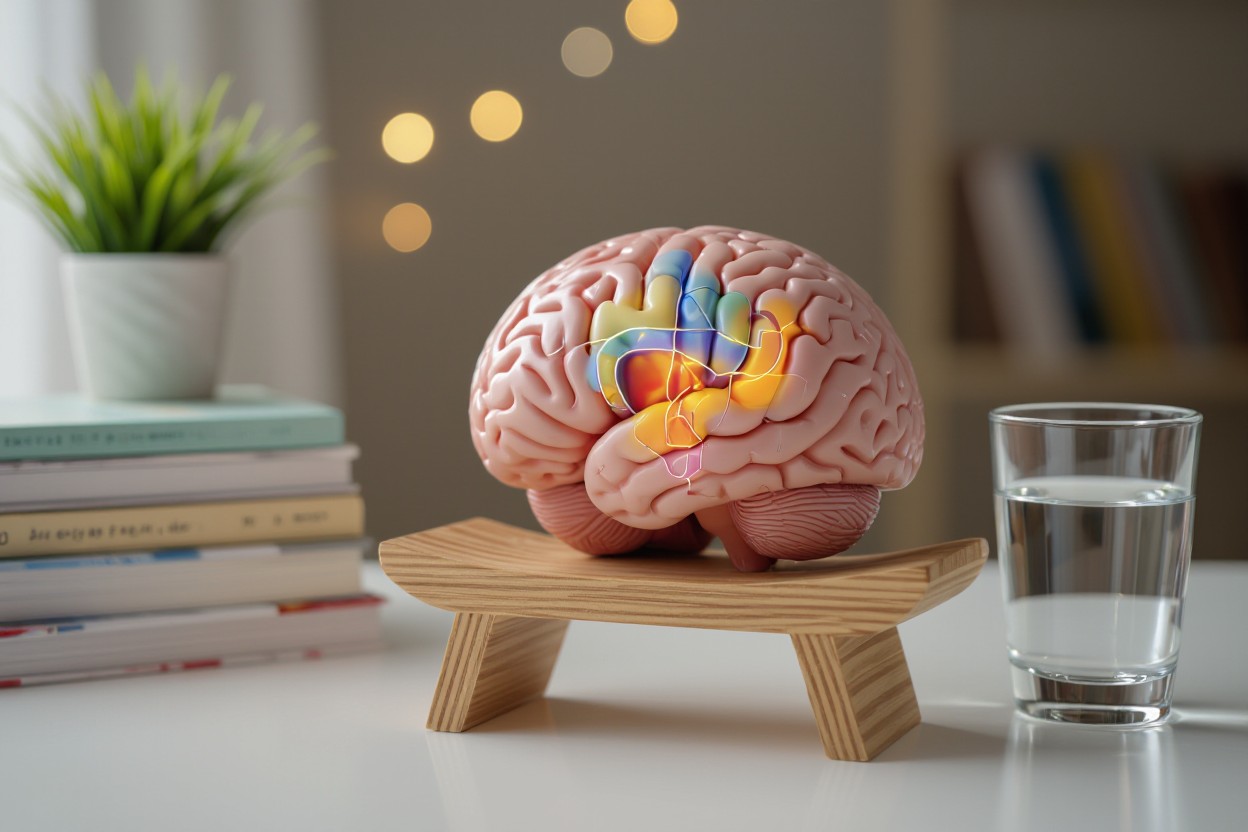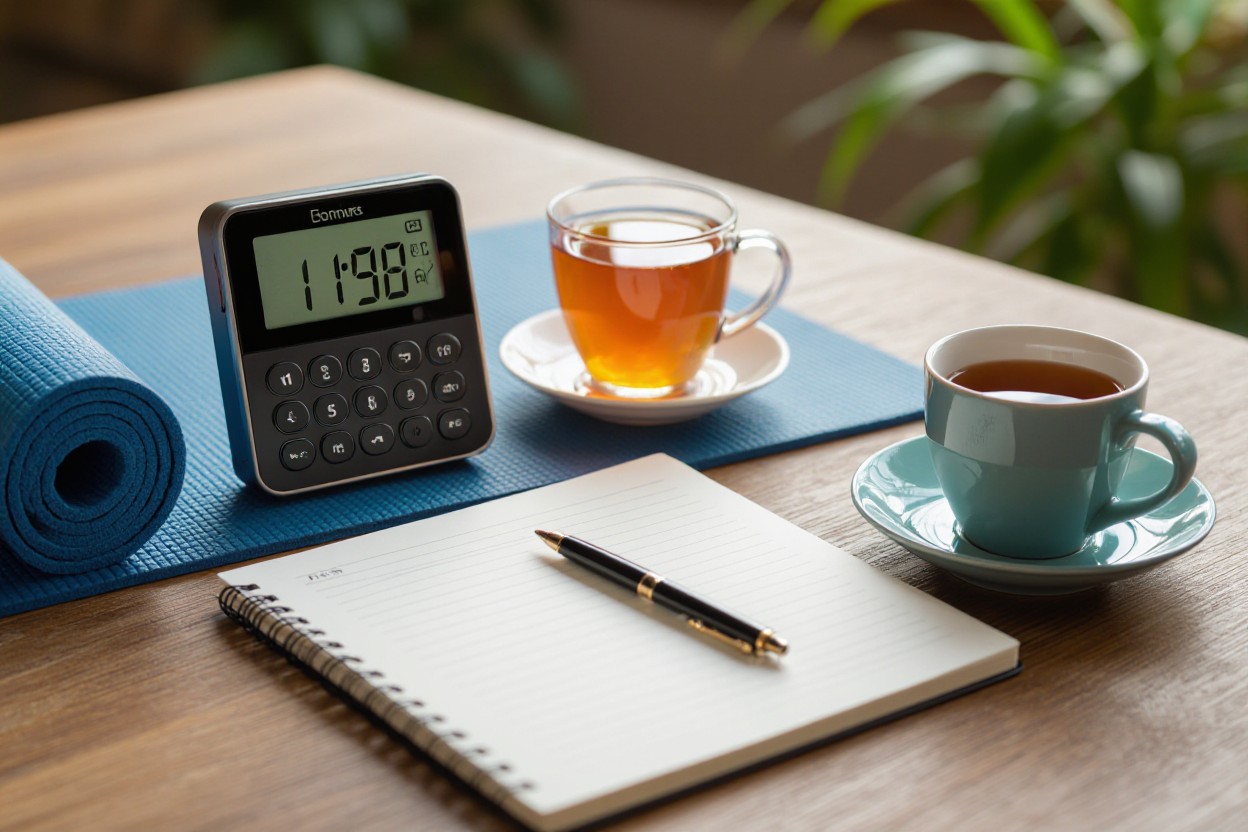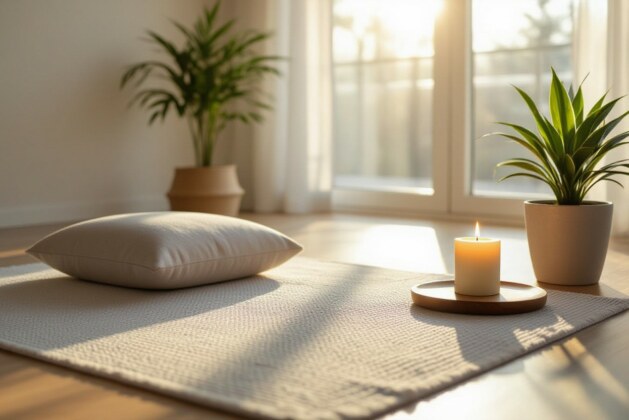You might not realize how powerful meditation can be in managing anxiety until you try it yourself. In this guide, I will share effective meditation techniques that have helped many find lasting peace amidst relentless worry. Anxiety often triggers a rapid cycle of thoughts that can feel overwhelming, but calming your mind through focused meditation is a science-backed way to interrupt this cycle. By learning to center your awareness and breathe intentionally, you gain tools to reduce stress and regain control over your emotions. Let me walk you through methods that are simple to integrate into your daily routine for tangible relief.

The Neuroscience of Anxiety and Meditation
How Anxiety Impacts the Brain
Anxiety triggers the amygdala, the brain’s fear center, causing it to overreact to perceived threats. This heightened activity disrupts communication with the prefrontal cortex, responsible for rational thinking and decision-making. The result is a feedback loop where your brain becomes stuck in a state of hypervigilance, leading to persistent worry and tension. Studies show that chronic anxiety can shrink the hippocampus, impairing memory and emotional regulation, which explains why you might feel mentally exhausted during intense anxiety episodes.
The Role of Meditation in Neuroplasticity
Meditation enhances neuroplasticity, the brain’s ability to rewire itself by forming new neural connections. This adaptability helps counterbalance the effects of anxiety by strengthening pathways in the prefrontal cortex and decreasing hyperactivity in the amygdala. Regular practice over weeks can increase cortical thickness and improve emotional regulation, effectively reshaping your brain’s response to stress.
Diving deeper, meditation initiates changes at a cellular level through increased production of brain-derived neurotrophic factor (BDNF), which supports neuron growth and survival. In functional MRI studies, practitioners display reduced amygdala activation alongside enhanced connectivity between brain regions involved in attention and emotion. This rewiring fosters greater resilience, helping you shift from reactive anxiety patterns to a calm, centered state, reinforcing that consistent meditation is more than relaxation—it’s cognitive transformation.
Breath Control: The Anchor in Turbulent Waters
Deep, intentional breath work serves as a reliable tool to interrupt anxiety’s cycle. When your mind races, return focus to your breath—slow, measured inhales followed by calming exhales. This simple act can tether your consciousness, much like an anchor stabilizing a boat in choppy seas. By repeatedly bringing your attention back to breath, you create a physical and mental refuge from spiraling anxiety, steering your nervous system towards equilibrium.
Techniques for Deep Breathing
Among effective strategies, diaphragmatic breathing encourages the expansion of your belly rather than the chest, maximizing oxygen intake. Try inhaling slowly through your nose for a count of four, holding briefly, then exhaling through pursed lips to a count of six. Another method, box breathing, cycles four counts inhale, hold, exhale, and hold, promoting rythmic calm. Both techniques emphasize control and mindfulness, helping interrupt the body’s anxious hyperventilation and encouraging relaxation.
The Physiological Response to Breath Regulation
Engaging in controlled breathing triggers the parasympathetic nervous system, often dubbed the body’s “rest and digest” response. This activation counters the fight-or-flight state by decreasing heart rate, lowering blood pressure, and reducing stress hormone levels. Regular practice can also enhance your brain’s prefrontal cortex activity, improving your ability to regulate emotions and reduce amygdala hyperactivity associated with anxiety.
Diving deeper, controlled breath influences vagus nerve stimulation, which creates a feedback loop calming your autonomic nervous system. Studies reveal that paced breathing at approximately six breaths per minute optimizes vagal tone, which not only calms the body instantly but also improves resilience to stress over time. This physiological process explains why breath control feels like a reset button for your nervous system, providing both immediate relief and long-term anxiety reduction.
Mindfulness Practices: Cultivating Present Awareness
Mindfulness opens the door to experiencing each moment fully, shifting your attention away from anxious thoughts about the past or future. By anchoring yourself in the immediate sensory experiences, like the feel of your breath or the sounds around you, you create a calming refuge from stress. This present-awareness practice rewires the brain, reducing activity in anxiety-triggering regions such as the amygdala. I find that even spending a few minutes daily tuning into your senses can markedly decrease the intensity of anxious episodes.
Simple Mindfulness Exercises for Daily Use
Try the 5-4-3-2-1 exercise: identify five things you can see, four you can touch, three you can hear, two you can smell, and one you can taste. This quick sensory check-in distracts your mind from spiraling thoughts and grounds you physically. Another technique involves mindful breathing—count breaths in sets of four, holding briefly, then exhaling slowly. Doing this for just three minutes can lower cortisol levels and ease your nervous system, offering relief even during busy or stressful days.
Transforming Anxiety Through Focused Attention
Focused attention meditation directs your mind to a specific object, such as your breath or a mantra, allowing anxious thoughts to pass without engagement. By training your brain to refocus swiftly, you weaken habitual rumination patterns that fuel anxiety. Research indicates that regular practice increases gray matter density in brain areas responsible for emotional regulation and executive function, supporting more resilient stress responses. I’ve seen how consistent focus techniques can empower you to disrupt anxious thinking cycles in real time.
To deepen this transformation, try dedicating sessions to observing anxious feelings as transient sensations rather than threats. Notice the physical tension, acknowledge the thought, and then gently return your attention to the chosen point of focus. This repeated redirection mats down reactivity, building neural pathways that favor calm over fear. Over weeks, these changes manifest not just in meditation but in daily life, enabling you to respond to anxiety with greater ease and clarity.

Visualization Techniques: Envisioning Serenity
Visualization guides your mind to create peaceful, vivid scenes that can temporarily replace anxious thoughts. By engaging your senses to craft detailed, tranquil images—like a quiet beach or a sunlit forest—you redirect your brain’s focus. This mental retreat helps lower heart rate and muscle tension, fostering a sense of calm that extends beyond the practice. Regular visualization can serve as a powerful mental tool in your anxiety management toolkit, especially when used alongside mindfulness and breath control strategies.
Crafting Calming Mental Imagery
Creating your own calming mental imagery involves painting a sensory-rich picture in your mind—feel the warm sun on your skin, hear the gentle rustle of leaves, smell the fresh ocean air. The more vividly you engage all senses, the more immersive and soothing the experience becomes. You might imagine yourself sitting beside a tranquil lake, watching ripples spread across the water, allowing your tension to dissipate with each breath. Personalizing these scenes makes them more effective in calming your nervous system.
The Science Behind Visualization and Anxiety Relief
Studies show that visualization activates brain areas linked to emotional regulation, like the prefrontal cortex, helping you gain control over anxious feelings. Functional MRI scans reveal that imagining peaceful scenes can reduce activity in the amygdala, the brain’s fear center. When I practice visualization, I notice my physiological signs of anxiety—like rapid heartbeat and shallow breathing—ease, supporting these findings. This neurological shift suggests why visualization can be a biofeedback-style technique, calming your mind by physically altering brain function.
Further research illustrates that repeated visualization promotes neuroplasticity, rewiring your brain to respond to stress with greater resilience. For example, a 2018 study in the Journal of Clinical Psychology reported participants who practiced visualization therapy experienced a 30% reduction in generalized anxiety symptoms after six weeks. Visualizing serenity triggers parasympathetic nervous system dominance, which slows heart rate and promotes relaxation. This dual impact on brain activity and bodily response underscores why visualization isn’t just distraction—it’s an active process reshaping how you handle anxiety.

Integrating Meditation into Your Routine: Making it Stick
Embedding meditation into daily life demands more than intention—it requires crafting a routine that naturally fits your schedule and mindset. I’ve seen that aligning meditation with existing habits, like pairing it with your morning coffee or evening wind-down, helps cement it as a ritual rather than a chore. Starting with brief sessions, even five minutes, builds momentum. Using apps or reminders to prompt practice keeps consistency high. Over time, this steady habit not only reduces anxiety but transforms meditation into a seamless, rewarding part of your day.
Building Sustainable Meditation Habits
Establishing sustainability means adapting meditation to your lifestyle’s ebb and flow. I suggest experimenting with different times—some days morning, others night—to discover when your mind feels most receptive. Setting small, attainable goals prevents overwhelm; for instance, meditating three times a week before increasing frequency. Tracking your progress through journaling or apps leverages accountability and reveals growth. Making meditation accessible—like having a designated quiet space or guided sessions ready—encourages consistency, turning the practice from a fleeting attempt into a lasting habit.
Overcoming Common Barriers to Regular Practice
Many hesitate due to distractions, time scarcity, or impatience with results. I address this by acknowledging that even short, irregular meditation can reduce stress, shattering the myth that sessions must be long or flawless. Setting realistic expectations prevents discouragement. Techniques such as mindful breathing or body scans can be effectively done anytime, reducing the need for special conditions. Recognizing these barriers as shared challenges helps normalize setbacks and fosters persistence, so you don’t abandon the practice at the first hurdle.
Beyond initial discouragements, I find that deeper obstacles like self-doubt or frustration with wandering thoughts often block sustained meditation. Understanding that distractibility is natural and part of the process helps me… and you… reframe these moments as training the mind, not failures. Incorporating flexibility—allowing session length and style to vary—also combats monotony and burnout. Support networks, whether online communities or meditation groups, provide motivation and shared experience, making it easier to stay engaged through difficult phases. Such strategies turn typical barriers into manageable bumps on the path to mindfulness.
Conclusion
Conclusively, I believe practicing meditation can significantly reduce anxiety by helping you calm your mind and focus your thoughts. Through techniques like mindful breathing, body scans, and guided imagery, you can create a sense of inner peace and resilience against stress. I encourage you to explore these methods consistently, as regular meditation strengthens your ability to manage anxiety and enhances your overall well-being. By dedicating time to these practices, you take an active role in nurturing a calmer, more balanced mental state.





Leave a comment